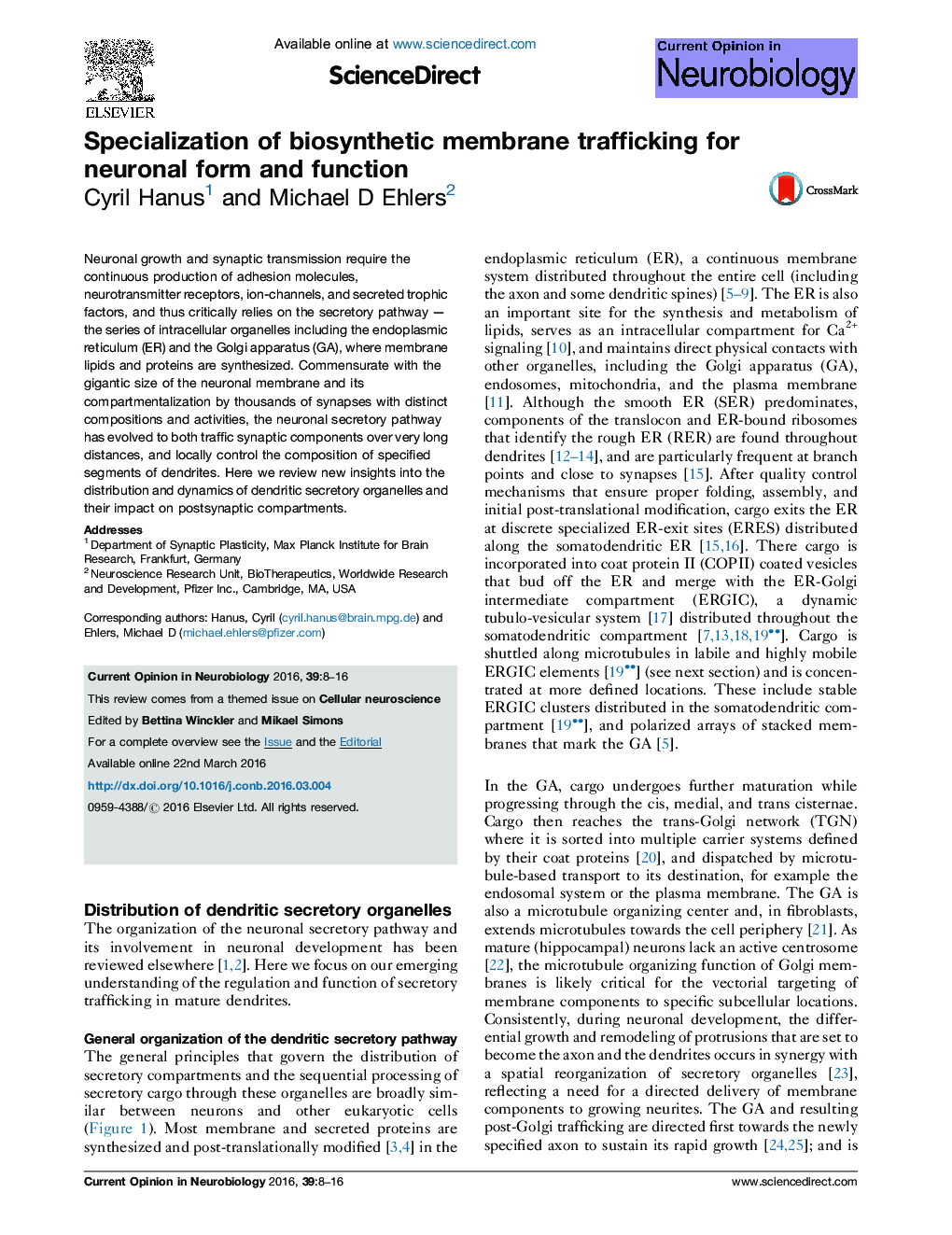| Article ID | Journal | Published Year | Pages | File Type |
|---|---|---|---|---|
| 4334120 | Current Opinion in Neurobiology | 2016 | 9 Pages |
•The neuronal secretory pathway includes both ubiquitous and neuron-specific organelles.•Secretory organelles differ between the soma and dendrites.•Nascent secretory cargo is transported over long distances or locally processed in dendrites.•Neurons use multiple secretory routes to traffic nascent postsynaptic proteins.
Neuronal growth and synaptic transmission require the continuous production of adhesion molecules, neurotransmitter receptors, ion-channels, and secreted trophic factors, and thus critically relies on the secretory pathway — the series of intracellular organelles including the endoplasmic reticulum (ER) and the Golgi apparatus (GA), where membrane lipids and proteins are synthesized. Commensurate with the gigantic size of the neuronal membrane and its compartmentalization by thousands of synapses with distinct compositions and activities, the neuronal secretory pathway has evolved to both traffic synaptic components over very long distances, and locally control the composition of specified segments of dendrites. Here we review new insights into the distribution and dynamics of dendritic secretory organelles and their impact on postsynaptic compartments.
